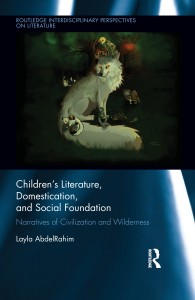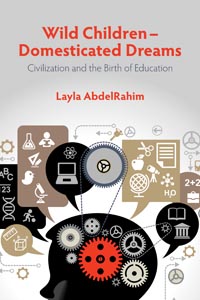I am an independent scholar and author with no institutional funding. Please, consider supporting me on Patreon so I can continue to do the work. Thank you!
Become a Patron!
Literacy of the Oppressed: Structural Violence and Children’s Books
Abstract:
Anthropologists, such as Jack Goody, or thinkers like John Zerzan or Walter Ong, have traced the development of written language to the beginnings of agricultural civilisation, which, in order to succeed in its premise of killing competition and of using the world and its inhabitants (plants, animals and humans) as resources and belongings, demanded new techniques (and technologies) to realise (i.e. make real and material) socio-economic inequalities. Writing down debts was the first revolutionary technology used to ensure that some will rise in power and riches over others. Literacy was thus imbued with authority to overpower the culture of mutual aid and freedom prevalent in the wild and among “savages” where everything belonged to all persons and species. Today, Ong says, literacy has become a structural element in the foundation of our knowledge, ingrained so deep that it has become impossible to view human relations with each other and the world outside of its prism. Even our relationship with our own children now takes place primarily through books and films (films are also based on the literate aspect of script-writing). Hence, there is an obsession with childhood literacy and the plethora of children’s books. In other words, at its root, literacy contains the seeds of violence and which, Zerzan, says can be traced back to the origins of symbolic thought which is necessarily based on separation or alienation of the subject from the real object and of the real object from its symbol.
I propose to discuss the structural violence of literate culture taking children’s books and their depiction of the “nature” of people and children, pedagogies, and familial relations, for example: in Caillou, Winnie the Pooh, Chronicles of Narnia, Anne of Green Gables, or Harry Potter and propose to examine whether it might be possible to use this, inherently violent, medium of writing and publishing to depict a peaceful world, such as the anarcho-primitivist Moomintroll Valley or a society based on mutual aid and cooperation such as Dunno and Friends.
I gave this talk on 1st October 2009 during the following course:
EDEC 249: Global Education and Social Justice (3 credits)
course description:
Curriculum and Instruction: A cross-curricular, interdisciplinary approach to teaching/creating learning experiences for students. It will foster critical thinking and nurture lifelong global understanding, active engagement and participation in relation to questions of social, economic, and environmental justice, by infusing these issues in the classroom.
Offered by: Integrated Studies in Ed
I am an independent scholar and author with no institutional funding. Please, consider supporting me on Patreon so I can continue to do the work. Thank you!









